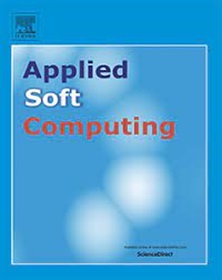Multi-objective genetic programming for binary classification with adaptive thresholds and a generalization-optimizing fitness function
IF 6.6
1区 计算机科学
Q1 COMPUTER SCIENCE, ARTIFICIAL INTELLIGENCE
引用次数: 0
Abstract
Genetic programming (GP) has been widely applied to classifier construction due to its flexible representation and powerful feature construction capabilities. Existing studies have proposed various fitness functions to improve GP-based classifiers, but most of them rely on a fixed decision threshold. However, when dealing with imbalanced classification problems, a fixed threshold often biases the model toward the majority class, thereby compromising overall performance. To address this issue, in this paper, we propose a novel multi-objective GP framework for constructing binary classifiers with adaptive threshold adjustment. During evolution, the method employs Youden’s Index to dynamically adjust the threshold of each individual, enabling the classifiers to better fit the underlying data distribution. In addition, we introduce a new class separation metric, distt, to quantify the clarity of class boundaries and enhance the generalization ability of the evolved models. The framework jointly optimizes three objectives: minority class accuracy, majority class accuracy, and the proposed distt metric. Experiments on 14 imbalanced datasets demonstrate that our method significantly outperforms conventional single-objective GP with fixed thresholds. Further results also confirm the positive impact of the proposed distt metric on classification performance. Compared to seven existing GP algorithms and five traditional machine learning classifiers, our approach achieves superior overall performance and better generalization ability.
具有自适应阈值和广义优化适应度函数的二值分类多目标遗传规划
遗传规划以其灵活的表示和强大的特征构建能力在分类器构建中得到了广泛的应用。现有的研究提出了各种适应度函数来改进基于gp的分类器,但大多数都依赖于固定的决策阈值。然而,在处理不平衡分类问题时,固定的阈值通常会使模型偏向大多数类,从而影响整体性能。为了解决这一问题,本文提出了一种新的多目标GP框架,用于构造具有自适应阈值调整的二分类器。在进化过程中,该方法利用约登指数动态调整每个个体的阈值,使分类器能够更好地拟合底层数据分布。此外,我们引入了一个新的类分离度量,distt,以量化类边界的清晰度,提高进化模型的泛化能力。该框架共同优化了三个目标:少数类精度、多数类精度和拟议的区域度量。在14个不平衡数据集上的实验表明,我们的方法明显优于传统的固定阈值单目标GP。进一步的结果也证实了所提出的区域度量对分类性能的积极影响。与现有的7种GP算法和5种传统机器学习分类器相比,我们的方法具有更好的综合性能和泛化能力。
本文章由计算机程序翻译,如有差异,请以英文原文为准。
求助全文
约1分钟内获得全文
求助全文
来源期刊

Applied Soft Computing
工程技术-计算机:跨学科应用
CiteScore
15.80
自引率
6.90%
发文量
874
审稿时长
10.9 months
期刊介绍:
Applied Soft Computing is an international journal promoting an integrated view of soft computing to solve real life problems.The focus is to publish the highest quality research in application and convergence of the areas of Fuzzy Logic, Neural Networks, Evolutionary Computing, Rough Sets and other similar techniques to address real world complexities.
Applied Soft Computing is a rolling publication: articles are published as soon as the editor-in-chief has accepted them. Therefore, the web site will continuously be updated with new articles and the publication time will be short.
 求助内容:
求助内容: 应助结果提醒方式:
应助结果提醒方式:


